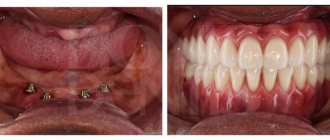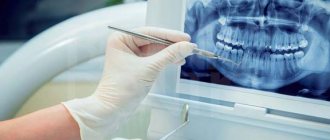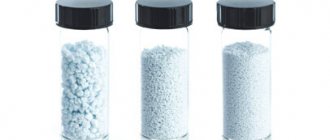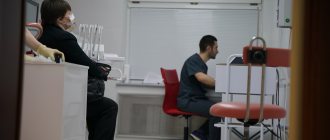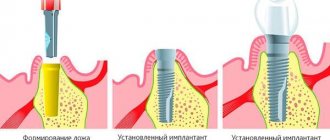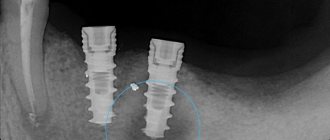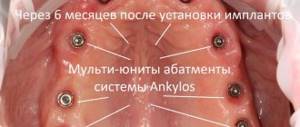Mentoplasty is a surgical intervention that allows you to correct the appearance of the chin in the presence of cosmetic defects. From an aesthetic point of view, the lower third of the face is an important part that influences the overall perception of a person's appearance. Chin plastic surgery, which is performed in St. Petersburg by the famous surgeon Alexander Anatolyevich Dmitriev, helps to achieve harmonious proportions. Using innovative correction methods and safe implants, a doctor of the highest category fulfills any wishes of the patient. The high quality of service in the clinic is due to the experience and continuous improvement of the staff, as well as the use of exceptionally effective plastic surgery operations.
Advantages of chin plastic surgery at ART-Clinic
Online consultations for patients from the regions
A team of highly qualified specialists with extensive experience
Modern minimally invasive techniques of operations and reconstructions
Affordable prices, promotions, discounts, installments
Mentoplasty at the ART Clinic is performed by expert surgeons with many years of experience in plastic surgery. They have performed hundreds of chin plastic surgeries and developed their own proprietary techniques. Doctors have improved, among other things, classical methods, making them more effective.
Sign up for a consultation by phone and (calls within Russia are free) or using a special form. At your appointment, you will learn how our expert surgeons can help you, and also that mentoplasty, the price of which varies greatly in Moscow clinics, is quite affordable at the ART Clinic.
When is bone grafting not recommended?
The decision to perform bone grafting, like any other surgical intervention, is made carefully, based on a thorough diagnosis, and, of course, there are a number of contraindications to such an operation.
The main contraindications to bone grafting are:
- Blood diseases, blood clotting disorders.
- Osteoporosis.
- Immunological diseases associated with immunodeficiency.
- Oral diseases.
- Pregnancy and lactation period.
- Nervous disorders.
What does chin plastic surgery give?
This operation perfectly helps to cope with the shortcomings:
- irregular shape of the chin, which may be caused by a congenital defect or the consequences of injury;
- unaesthetic chin size.
If the chin was sloping or small, mentoplasty will increase it; long or large - will reduce. By the way, a small chin often becomes one of the reasons for early aging: if the mandibular bone at the place of the chin protuberance is too narrow, then with age the skin and soft tissues on it begin to stretch and sag faster.
With the help of genioplasty (chin surgery), the face will acquire a harmonious and fresher appearance, the profile will become clear and proportional. Thanks to this improvement, the patient becomes more self-confident and gets rid of the inferiority complex. This has a good effect on personal and social life, and helps build a career.
If you want to remove a defect such as a “double chin,” see the neck lift section for information about this.
What factors provoke bone loss?
Bone tissue resorption can be caused by the following:
- Age factor. The risk category includes persons whose age exceeds 40–45 years and who suffer from diseases of the musculoskeletal system;
- Complications after injury to the mandibular and maxillary parts of the jaw;
- Changes in bite of acquired and congenital nature;
- Genetic predisposition. If one of the parents suffered from such anomalies, there is a possibility of their occurrence in children (or grandchildren);
- Long-term use of removable prosthetic devices. Even in the case of fixation of high-quality models, the risk of bone loss cannot be excluded;
- Massive inflammatory processes in the oral cavity, advanced caries, inflammation of periodontal tissue in the chronic stage.
More than 80% of cases of bone tissue resorption are caused by age. In people over 40 years of age, irreversible atrophic processes make themselves felt, which are aggravated by vitamin deficiency, unbalanced diet, consumption of alcoholic beverages and the use of tobacco products.
Regardless of the etiology of its occurrence, bone loss is one of the serious pathologies that, in the absence of effective treatment, can provoke the following negative manifestations:
- The presence of deep wrinkles, early skin aging. Flabby areas appear in the face area, the skin loses its natural elasticity;
- Deterioration of the speech apparatus. The person begins to lisp and loses the ability to pronounce words clearly;
- Malocclusion. Accompanied by a change in the oval of the face. In this case, the problem can only be dealt with through long-term treatment and observation by specialists;
- Loss of stability, tooth loss;
- Deterioration of the gastrointestinal tract. Pathology occurs due to improper chewing of foods.
You can eliminate the above consequences if you visit an experienced specialist in a timely manner. Bone grafting is performed within 12 months after detection of pathology. If surgery is delayed, there is a possibility of losing all teeth.
More about the operation
How is chinplasty performed?
Genioplasty is performed under general anesthesia. Before the operation, the patient needs to undergo tests. There are contraindications. One of the main ones is the age of up to 23 years, since until this time the skeleton continues to form.
There are three types of mentoplasty performed at the ART Clinic:
- Chin augmentation with facial implants . They are selected to suit the individual facial features of each patient. In difficult cases, they are made according to a three-dimensional model of his head. ART Clinic uses only new generation implants. They take root well and are completely safe.
- Chin augmentation by moving bone tissue . The method works well to correct a chin that is slanted or too small, giving the face a “bird-like expression.”
- Chin reduction using osteotomy . To solve the problem, ART-Clinic surgeons during the operation remove fragments of tissue of the lower jaw and move it slightly back, and then securely fasten it.
During chin surgery, an incision is made in the mouth on the mucous membrane of the lower lip. Therefore, the scar will remain invisible. In general, the procedure lasts about an hour. If it is performed together with other plastic surgeries, such as a facelift, otoplasty or rhinoplasty, the duration can increase to 2-3 hours.
How long do you need to stay in the clinic?
Since mentoplasty (chin surgery) is always performed under general anesthesia, you will need to spend a day at the ART Clinic - maximum two. Here the patient is guaranteed complete comfort and the highest quality of medical care. It includes constant monitoring of health status and various procedures.
How is the rehabilitation going?
To quickly return to your normal life after chin surgery, you need to follow the recommendations:
- wear a sterile fixing bandage for two weeks;
- drink and eat warm liquid food so as not to overwork the lower jaw with chewing;
- brush your teeth carefully;
- avoid heavy physical activity and active facial expressions;
- do not go to the bathhouse or swimming pool.
How much does chin surgery cost?
If you want to find out what the price of chin mentoplasty is at ART-Clinic, read this page to the end or look at our price list. It is important to understand that the price for chin plastic surgery, whether it is Moscow or another city, is always accurately determined only during a consultation with a plastic surgeon.
The reason is that, just as there are no people with absolutely identical faces, no two identical chins are found in nature. And the wishes of patients, as a rule, are different. Therefore, the price for chin mentoplasty in Moscow at ART-Clinic is exclusively personal. It may decrease during promotions and other events with discounts.
If you want to take out a loan for the operation or pay for chin surgery in installments, you can find out more about the conditions here.
When does a patient need bone grafting?
Loss (recession) of bone tissue occurs in the patient:
- In the place of a missing tooth in the absence of adequate prosthetics with a load on the gums for a long time (more than 6 months).
- As a result of a long course of periodontal diseases.
- As a result of injury.
- Consequences of the inflammatory process after an infection.
Indications for bone grafting:
If the doctor has identified insufficient bone tissue, he prescribes bone grafting in the following cases:
- Before traditional two-stage dental implantation. There are some types of implants that can be installed without bone augmentation, with a slight reduction in its volume, but they cannot always be used. The decision to perform an operation is made individually, based on the patient’s situation. Most often we talk about osteoplasty when a patient needs to have several implants installed.
- When a patient has a pronounced loss of gums (recession) against the background of a decrease in the volume of bone tissue, bone grafting will help close such recession.
Prices for chin surgery
Specialist consultations
| Primary appointment (examination, consultation) with a surgeon | 1 500₽ |
| Repeated appointment (examination, consultation) with a surgeon | 1 500₽ |
| Appointment (examination, consultation) with a primary surgeon, Doctor of Medical Sciences, Professor Nerobeev A.I. | 5 000₽ |
Chin surgery
| Correction of the contours of the chin area (lipoaspiration method) | 45 000₽ |
Anesthesia
| Local anesthesia | 5 000₽ |
| Intravenous anesthesia (IVVA) | 20 000₽ |
| General anesthesia (GENA). The cost depends on the duration of the operation (from 2 to 8 hours) | from 30,000₽ to 40,000₽ |
Hospital stay
| Stay of patients in the ward after general anesthesia (1 day) | 10 000₽ |
| Patients' stay in the ward after intravenous anesthesia (day) | 5 000₽ |
View full price list
How does bone grafting surgery work for a patient?
Osteoplastic surgery is always part of the patient’s treatment plan and is performed at the planned stage of treatment. It is carried out as part of a comprehensive treatment for prosthetics on implants or complex periodontal diseases.
All types of osteoplasty are considered serious surgical interventions and are performed by a dental surgeon on an outpatient basis, always in a surgical office.
Anesthesia for such operations is an important component in ensuring patient comfort during the procedure. Local conduction anesthesia with preliminary premedication is used. Patients who are experiencing anxiety are advised to take light sedatives the day before the intervention. The patient experiences discomfort on the first day after surgery - during this period the doctor prescribes painkillers.
I Preparatory stage
- Any treatment begins with a complete diagnosis. In this case, the patient must undergo:
Diagnosis by a surgeon
Diagnosis by an orthopedist
Assessment of periodontal condition (diagnosis by a periodontist) - according to indications.
- In order for the recovery process to go faster, it is necessary to exclude the presence of infection in the oral cavity, therefore, before surgery, sanitation (treatment of caries and acute inflammation of the gums) and professional oral hygiene are mandatory.
II Carrying out the operation
- Introducing anesthesia to the patient.
- A dental surgeon performs osteoplastic surgery according to the necessary methodology approved in the treatment plan. The duration of the manipulation usually does not exceed 1-2 hours.
- The wound is sutured and a pressure bandage is applied.
Rules of conduct for the patient in the postoperative period after bone grafting
Before undergoing osteoplastic surgery, it is advisable for the patient to plan his schedule in such a way as to have time (3-4 days) for rest and recovery.
There may be an increase in soft tissue swelling during the first 2 days, which subsides by the 4th day, mild malaise, and aching pain.
Necessary:
- Eat light, gentle semi-liquid food, exclude hot, spicy, sour, salty foods until the wound heals.
- Do not visit the bathhouse or sauna.
- Don't fly by plane.
- Follow all doctor's orders, rinse your mouth after every meal and apply wound-healing medications.
- Oral hygiene in the area of the surgical field is carried out with a cotton swab dipped in hydrogen peroxide. Brush all other teeth using the standard brushing regimen twice daily using toothpaste recommended by your doctor.
